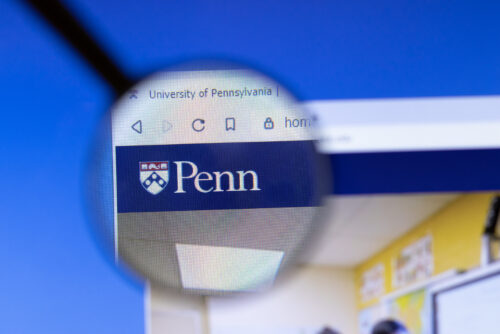Amazon announced last week the end of its AmazonSmile program. While no nonprofit will suffer significantly, there is a downside to this decision.
Launched in 2013, the premise of AmazonSmile was simple: you buy something you would have bought anyway, and Amazon directs 0.5% of your purchase to the qualified charity of your choice as a donation. It was a popular program, donating more than $377 million to hundreds of thousands of nonprofit organizations since its inception, according to its website. Last week, Amazon announced the sunsetting of this program, effective February 20. Hand-wringing ensued. But does the end of AmazonSmile really matter?
TO INDIVIDUAL NONPROFITS, NO
From the standpoint of any individual nonprofit recipient of AmazonSmile funds, it almost certainly does not matter. In fact, I would argue that its sunsetting is a net positive for nonprofit organizations, as AmazonSmile became one of the many shiny objects that lured development officers away from what they should really be doing: meeting with and getting to know their donors.
In the program’s ten-year existence, the Institute on Religion and Public Life, where I work, has received a little more than two thousand dollars. I’m sure that larger organizations have brought in more, but for practical purposes and on an annual basis, the revenue is little more than a rounding error. A nice little boost to the bank account, but nothing that’s going to make or break a campaign or revenue goal.
TO THE PHILANTHROPIC LANDSCAPE, YES
My personal contributions through AmazonSmile are even more of a rounding error: the princely sum of two dollars and forty-three cents. Notwithstanding my own paltry contribution, I do think the end of AmazonSmile matters when we consider the question from the philanthropic side. The trajectory of AmazonSmile tracks, in miniature, the transition from charity to philanthropy that Philanthropy Daily publisher Jeremy Beer recounts in his 2015 book The Philanthropic Revolution.
Perhaps the biggest surprise all along was that control-hungry Amazon would launch a program like this in the first place. In today’s image-obsessed, PR-centric corporate landscape, AmazonSmile seemed a quaint anachronism. If you had asked each member of Amazon’s leadership team (and, I’d imagine, the vast majority of its white-collar employees) whether they support the work that my employer, the Institute on Religion and Public Life, does, I suspect the answer would be a resounding no. And yet, every few months our check would come: a modest, two-figure donation to my attention from the AmazonSmile Foundation. On the other hand, coming from a company helmed by a man who literally crowd-sourced ideas about how to give away his money on Twitter, perhaps outsourcing corporate philanthropy to customers seemed like a good way to save time.
I mention my own contribution total through AmazonSmile because I have seen a few people argue that the program enabled people to feel good about themselves by checking the “giving” box while doing nothing that qualifies as charitable. I find it hard to believe that the type of person who thinks this way—if he exists—would be very likely to give at all to charitable causes. At least with AmazonSmile, his shopping cart full of cheap Chinese trinkets is directing a buck or two toward a charity that wouldn’t otherwise have received it. It would take an astronomical sum to generate enough of an AmazonSmile gift that someone would genuinely feel that they were being charitable.
That said, the instinct of these responses to emphasize one’s duty to be generous is the correct one. Amazon’s move bespeaks a broader shift in the philanthropic world from an emphasis on the donor and his responsibility to be generous to the donation’s impact. The former is egalitarian: Everyone has a duty to be generous, whether they give a widow’s mite or write seven-figure checks. The latter is utilitarian and technocratic: It does not matter where the resources come from, only that they are directed toward the greatest possible impact. The duty to be generous remains, but it is downstream from this impact-oriented imperative and thus distributed based on one’s ability to deliver impact.
But don’t take my word for it. Consider Amazon’s own announcement that it was canceling AmazonSmile, lovingly addressed Dear charitable organization:
After almost a decade of running AmazonSmile, we learned that with so many eligible organizations—more than 1 million globally—our ability to have an impact was often spread too thin.
Over the past few years, we’ve seen that Amazon can have a more significant and lasting impact if we invest in specific areas and focus our philanthropic efforts in the communities where our employees live and work. We’ve started to see the benefits of a more focused approach with our investments in programs like Amazon Future Engineer and our $2 billion investment in building affordable housing in our hometown communities through the Amazon Housing Equity Fund—and we will continue to pursue and invest in other areas where we’ve seen we can make meaningful change.
As the recent downfall of effective altruism darling Sam Bankman-Fried has illuminated, this single-minded focus on impact is often little more than cover for less savory motives, and this case is no different. In a difficult and uncertain economic moment, pocketing an extra 0.5% per transaction is an easy way to fatten the bottom line a bit. On its own, it’s difficult to begrudge Amazon for this; they are a company, after all. What I find less savory is that, for a company so ruthlessly efficient at the expense of its blue-collar warehouse employees, this centralization will enable Amazon to squeeze every last drop of PR value from its philanthropic investments in the hopes of laundering its reputation a bit better in the public square.
Of course, this move only serves to align Amazon with how most other corporate philanthropy operates already. For efficiency-seeking companies, seeking efficient philanthropic giving probably makes intuitive sense. As the domination of philanthropy by the ultra-wealthy continues apace, perhaps we have stumbled upon a partial explanation for the growing prominence of effective altruism and its kindred, to the diminishment of old-fashioned, biblically inspired charity. Count me among those who prefer the latter.







This is an interesting perspective. I can share that the news and change will impact me. I do not buy trinkets, but have purchased books and gifts for family and friends. Plus the occasional consumer item that was bot found readily in a local store. Even when I began to purchase books from brick and mortar shops or directly from publishers, I might still purchase a favorite from Amazon so as to be a “verified customer” and leave a review that counted. When Amazon announced it planned to reimburse employees who traveled for abortions – I decided to stop shopping on Amazon. Then realized that the one charity I had long supported on Smile, had changed its structure during covidian times and was not in as much need for cash funding. So selected a local Pregnancy Center as my charity of choice. And while I shopped far less frequently on the behemoth, I did so knowing a bit of prolife love was represented. If that tiny sliver of positive consumer news is busted, then my conscience can no longer support Amazon at all. I am sure that my meager dollars do not make much of a difference in Amazon’s bottom line, but at least I will not be funding women flying to end the life of their babies. Which likely should have been my decision full stop ages ago.
Consumer habits are difficult to change, but doable. I have not set foot in a Target since I signed a boycott that was submitted to the company after they attempted to make all restrooms “all gender friendly” and began their push to erase boy and girl themes for toys and clothes. If my boys wanted to buy a doll, was great to take them down the doll aisle. But they were seriously confused by the model of a little boy in fairy wings and a skirt in the “boys” department. And the front of store rainbow display became more than just a weeklong event. Aggressively so.
We shop elsewhere, where shopping is just shopping and everyone is welcome. (And hopefully am not funding abortion with my purchasing). And focus giving – on giving to the people and organizations in most need of support.
This is an excellent website, new for me. Looking forward to reading more.
The end of AmazonSmile is not a measure of its impact. It is a measure of Amazon’s leadership focus on personal objectives being greater than the belief in supporting its loyal customers. – Read more of our analysis at: https://www.sparo.com/2023/01/20/the-shutdown-of-amazonsmile-is-a-step-back-for-americas-non-profit-world/